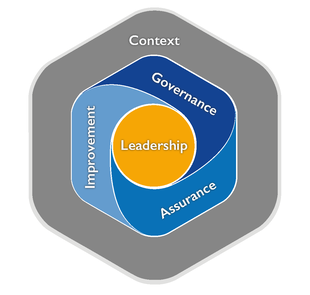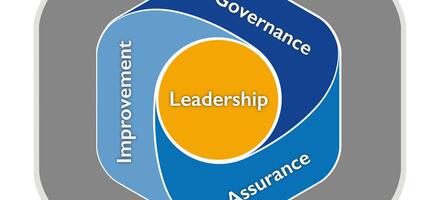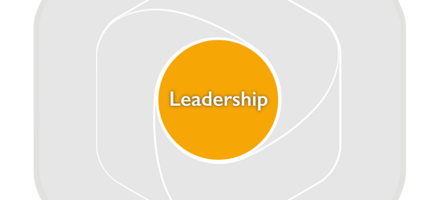
Frequently Asked Questions: The Profession Map
We understand that navigating a new tool can be overwhelming, which is why we’ve collated a list of frequently asked questions (FAQs) to help you make the most of the Profession Map. From understanding your career options to developing your skills and competencies, we've got it covered.
What is the Profession Map?
In 2014, we launched the Competency Framework (CF1.0). The aim of CF1.0 was to describe the abilities and types of behaviour that a modern quality professional needs to succeed. The framework was made up of five core elements: Governance, Assurance, Improvement, Leadership and Context. The framework demonstrated what each element represented for quality professionals. It has attracted global interest and been used in many ways by CQI members and other professionals.
It was clear that the framework was transformational in helping professionals to define and develop professional competence. However, by 2021 we realised it needed more detail to be useful in continuing professional development. There were also more challenges and opportunities arising, including the rise of digital technologies and the increasing influence of environmental, social and governance (ESG) objectives to corporate life. So, we decided to build a more detailed competence framework, listing the necessary knowledge, skills and behaviours needed by the modern quality professional. This has now been turned into a navigable Profession Map of competence.
Who is the Profession Map for?
The Profession Map is a tool for individuals to assess their competence across the five elements of the framework and four tiers (from basic foundations to a more advanced state), and to plan personal development. Organisations can use this tool to assess team competence and inform capability development. It also provides a basis for industry sector groups to build specialist sector knowledge and skills.
The full version of the map is exclusively available to CQI and IRCA members. However, an overview is available to anyone interested in finding out what quality professionals do and the potential value they add to any organisation in which, or with which, they work.
The Profession Map is intended to be of value to all people wishing to develop their quality competence. It is primarily written for quality and audit professionals but has value for other disciplines where some competence in quality management is an advantage, such as engineers wishing to build quality into a product or process design, or continuous improvement practioners.
Why is the Profession Map important?
There are a number of reasons why we saw the need for this more detailed statement of competence:
Defining the scope and role of quality management and the profession
There is still much confusion as to what people working in quality actually do. For most people, quality is primarily related to the inspection of products or monitoring of standards of service. But being a quality professional is so much more than this. So, we saw the need to better explain the world of quality management and the work of quality professionals.Promoting the value quality professionals can add
Because of the common misconceptions surrounding the profession, quality professionals and their contributions are often undervalued. A competent quality professional can add unique and essential support to their organisations just as the accounting, legal and HR professions have become recognised for.Supporting professional and career development
Within the quality profession, there was an expressed need to better define the knowledge, skills and behaviours required. Professionals keen to plot a career pathway, build the capability of their quality teams, develop into new roles, and climb the corporate ladder were all asking the same questions concerning what knowledge, skills and behaviours they should possess and acquire.Supporting quality management competence outside the profession
We know that quality is (or should be) everyone’s business. Quality cannot be done to people, it should be achieved by everyone, including the people creating the product or delivering the service, or running the business, or providing a service to the organisation, or cleaning the facilities. For that reason, everyone in the business would benefit from developing some of these competences. There’s something here for everyone.
How is the Profession Map structured?
The primary purpose of the map is to provide a simple, and easily navigable statement of competence for each element of the original framework.
The structure of the map is quite simple. Each element (such as Governance) is broken down into three to five key competences. In turn, each of these key competences is then defined via a list of statements of competence, arranged across four tiers. These tiers relate to the progressive development of extent and depth of competence, from the basic foundations to a more advanced state.
Each of the four elements of Governance, Assurance, Improvement and Context focus on skills and knowledge, and the behavioural aspects of competence have all been grouped into the Leadership element.
How can the Profession Map be used?
Each professional should begin with a general understanding of the specific competences relating to their role. This is often included in some kind of job description or Skills Matrix, but can also be understood by assessing the demands of their role.
The map will be supported by a self-assessment tool that will allow CQI and IRCA members to create their own current and target competence profiles.
This will then link to the suite of professional development products, tools and services that the CQI and IRCA provide.
How does the Profession Map benefit individuals and organisations?
Being qualified as a professional requires continuing professional development (CPD). This is becoming especially important as the rate of change in organisational life and the wider global environment is increasing.
Professionals that continue to develop their competence will lead the way in their chosen discipline. They will also become increasingly more valuable to the organisations that they serve.
In addition, those responsible for teams of quality professionals will have the basis to assess and develop the overall competence of their teams, matching this to the demands that the organisation is placing on them. In a world where skills are difficult to recruit for, this is a real advantage.
However, not all professionals will work in large teams and may find themselves without sources of comparison from which they can target their own professional development. In time, a series of typical role profiles will be available to support this comparative process.
Where can I find the Profession Map?
Simply click Profession Map to access the map and explore its benefits for your career growth and development today.
Why is ‘Experience’ not a component of competence?
Our extensive process, which involved a literature review and benchmarking, concluded that the three key elements of competence should be skills, knowledge and behaviours. This combination also fits neatly with the structure of the description of competence in associated apprentice-level frameworks. Our view was that as the map and the self-assessment tool is designed to support personal development and career planning, the levels and extent of experience could vary considerably between people of similar roles and in different organisational contexts. If it were designed to provide a universally applied statement of competence related to each role, then experience would become more relevant. However, we chose not to take this approach due to the fact that the huge range and variety of contexts within which our professionals work would make this a lengthy process of questionable value.
How do you take account of the potential for ‘self-reporting’ bias?
Any self-reporting tool is open to such bias, but this is a tool to help individuals develop themselves, so they will lose out if they deny gaps in their competence. We also advocate the use of peer review when carrying out an assessment. An independent view from a trusted source will be invaluable.
Which were the 10 professional institute models you looked at?
During the research process, we referenced the following:
- Institution of Mechanical Engineers
- Institution of Engineering and Technology
- Chartered Institute of Personnel and Development
- Institute of Chartered Accountants of England and Wales
- Association of Chartered Certified Accountants
- The Law Society
- Association of Accounting Technicians
- British Medical Association
- Royal Institution of Chartered Surveyors
- Royal College of Nursing
How have the new inclusions such as environmental, social and governance (ESG), risk, Quality 4.0 and innovation been incorporated into the Profession Map?
During the testing process we carried out reviews of each of these subject areas to check that the lists of detailed competences that relate to them represent a necessary and sufficient set, commensurate with current levels of understanding amongst the professional volunteers that offered to support the testing. The level of statements of competence at which this was done sits below that of the currently available map. This detail will become available when the self-assessment tool is launched and will only be accessible by members. When this is launched, we will be issuing supporting material that will address the need raised in this question.
Why has the Competency Framework changed?
The CQI’s 2020-2030 Strategy states an ambition to lead quality management practice. This requires the CQI to support the ongoing relevance of the quality discipline and profession through leading-edge research. This ambition aligns with our core purpose, which is “for the benefit of the public to advance education in, knowledge of, and the practice of, quality in industry, commerce, the public service, and the voluntary sector.”
Whilst the first version of the Competency Framework (CF1.0) was a big step towards achieving these aims, it lacked the detail and links to sources of professional development to be of practical use to individuals and teams. We also recognised that there are now more challenges and opportunities which need to be taken into account, including the rise of digital technologies and the increasing influence of environmental, social and governance (ESG) objectives to corporate life.
A survey taken to assess the success of CF1.0 found that roughly 50% of those responding had accessed the CF1.0 at any time in the prior seven years. This was clearly insufficient to achieve our aims.
We recognised that if the CQI is to act as the UK body for quality professionals, and continue to promote the benefits of having one or more working in any organisation, it seemed essential to know what constitutes a qualified professional.
With these factors considered, we decided that it seemed the right time to develop the next version. So, we commissioned a project to build a more detailed competency framework, listing the necessary knowledge, skills and behaviours needed by a modern quality professional. This has now been turned into a navigable Profession Map.
How was the Profession Map developed?
The Profession Map was developed over a nine-month period of literature research, consultation, development, and testing. In developing the scope and structure of the framework, the project team mined over 40 literature sources, made reference to existing sector variants and two other company-specific frameworks.
Once this was done, the detail of the framework was developed via a survey of 380 professionals, followed by interviews and workshops with 48 practioners, in all representing 17 sectors and 10 countries.
Sources from outside of the profession were also involved. The project team consulted C-suite managers, and similar competence profiling approaches from 10 other professional bodies were reviewed. The content was then refined in workshops and a Corporate Partner Roundtable event.
Throughout this process, the project team regularly referred to measures of quality management excellence e.g., the ISO 9001 standard and other quality management maturity models.
Finally, the resulting product was taken through a four-phased test programme to confirm that the original design criteria had been met.
In total over 450 different professionals were involved, resulting in over 500 separate ‘touch points’. It has truly been built by the profession for the profession.
What are the changes and differences to the Profession Map? Why has sustainability and Quality 4.0 been added to the competences?
Fundamentally, this new version provides a more thorough description of competence in order for individuals and organisations to plan personal and team capability development.
Following the review of the CF1.0, the Profession Map project team decided to include the list of competences across four areas where a modern quality professional can have an impact:
The effect of digital technologies on the practice of quality management (generally known as “Quality 4.0”).
The increasing demands for all organisations to demonstrate respect for people and the planet, currently expressed as environment, social and governance management (ESG).
The demand for innovative approaches to problem solving and improvement.
The growing importance of enterprise risk management and the contribution that quality management can make in managing risk.
As well as these additions, we have included tools to assist any professional in using the Profession Map to assess and improve their levels of competence.
Are there any implications for existing members? (Regrade application/assessment processes/transition timeline considerations)
The Profession Map was designed primarily to assist individuals in their professional development. It is not meant to be a universal standard by which all roles could be defined, and grades of member could be awarded. Our profession is too varied to make this a realistic and effective ambition.
That’s why the intention is to use the map as a reference point for membership applications and regradings for all grades, excluding fellow grade.
In time, and with adequate notice, the application and regrading process will be updated to reflect this, with full instructions as to how applicants should reference the map.
What if I think that something is missing from the Profession Map?
We recognise that the subject of competence is both broad and deep. Our profession comprises a wide variety of roles and areas where a depth of expertise is required.
Even though the huge level of consultation involved gives us confidence that this framework contains much of what our profession requires, we recognise that it is not realistic to expect it to be 100% inclusive.
However, this version now gives us the basis to develop the framework over time. We will encourage all users to feedback their thoughts and ideas and, periodically, we will commission updates.
Tier 1
You are able to demonstrate an awareness and understanding of key quality terminology and concepts related to each competence element. You understand the purpose and importance of the Components of Competence set out within the framework. You can demonstrate your application of the skills and knowledge described in straightforward/non-complex situations and under supervision. You know where to source guidance and best practice information. You are aware of your levels of competence and do not go beyond them unguided.
Tier 2
You are able to undertake activities that address the Components of Competence set out within the framework. You demonstrate a consistent application of the skills and knowledge described while working independently (unsupervised) in straightforward/non-complex situations. In more complex situations you are able to contribute to activities with appropriate guidance. You can apply and identify good practice, and identify when things are not right, highlighting issues as appropriate and contributing to the resolution of non-complex issues.
Tier 3
You are knowledgeable on the activities that address the Components of Competence set out within the framework, to the extent that you would be able to supervise and train others. You have extensive experience of applying the skills, knowledge and behaviours described, in both straightforward and complex situations. You are able to carry out complex, non-standard tasks consistently generating effective solutions when required from established best practice or contributing to the design of new approaches.
Tier 4
You have the ability to lead, develop or advise on the activities that address the Components of Competence set out in the framework. You have detailed knowledge and may be consulted by others in the organisation, industry or profession. You can solve complex problems and succeed in complex situations, if necessary, generating innovative solutions or designing new approaches.
If you are a quality professional in a strategic or leadership role you are involved in shaping and leading an organisational-level approach to the development and deployment of goals and objectives, strategies, policies and plans, and supervising and leading actions undertaken by others.
The Profession Map

Your route to success - equipping modern quality leaders to meet evolving business demands.
Discover Typical Competence Profiles

Typical Competence Profiles and Career Pathways Map, navigating your career pathway
Tell us your thoughts
If you have any feedback or questions, please feel free to contact our Head of Professional Development Gareth Kingston.




